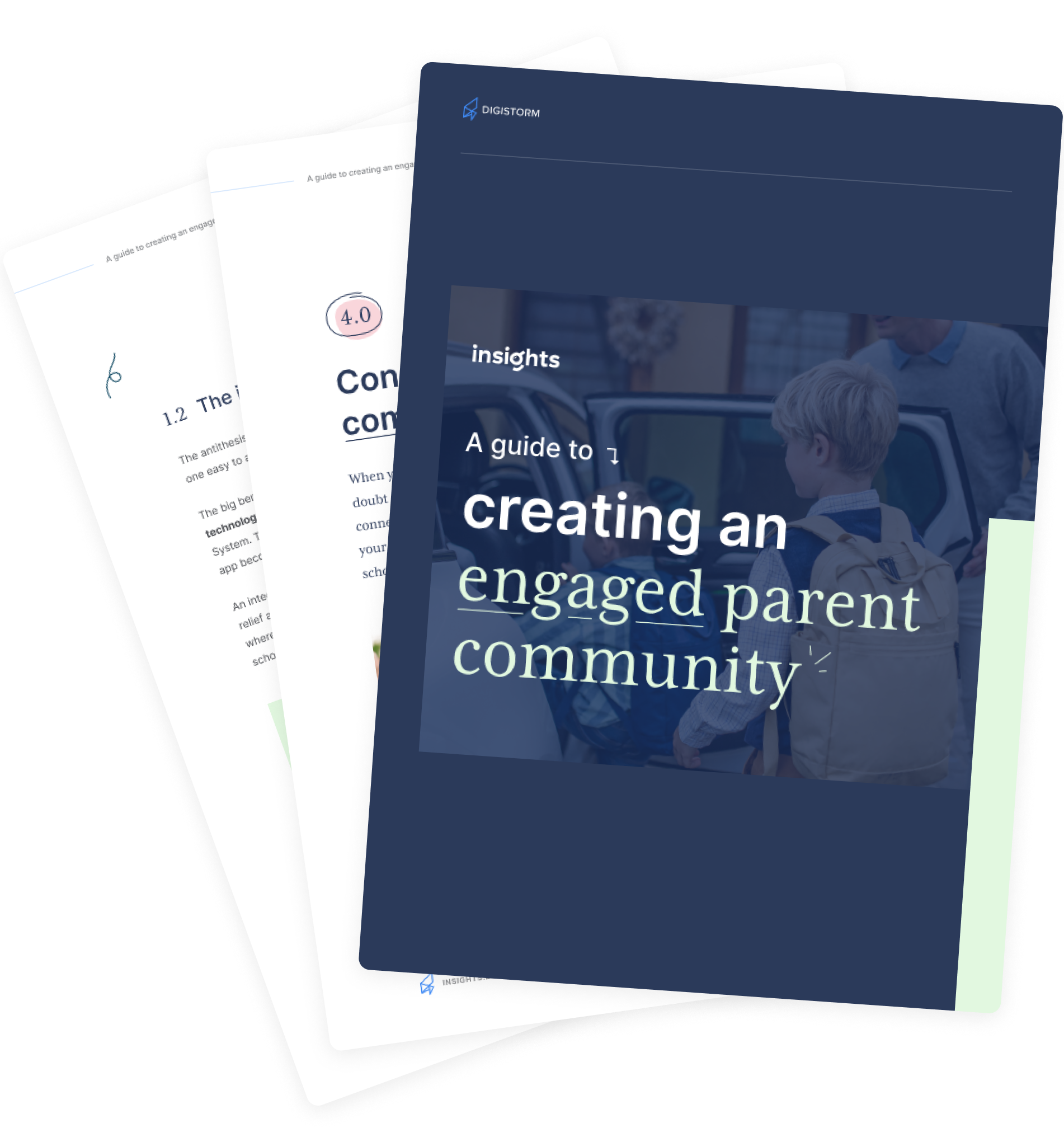With a background in journalism and marketing, Heather is well versed in all things content and inbound marketing. She’s passionate about delivering content that helps her reader take action almost instantly.
At Digistorm, we talk a lot about building relationships with parents using technology. From the first time, they come across your school website, through your entire enrollments process and beyond, there is a myriad of ways that you can keep busy parents in the loop using digital tools. But what about when parents choose not to use digital tools? How do you continue to engage the segment of families that rarely check their email?
There's a growing movement — you may have experienced it within your school — of parents who believe that their own screen time is damaging to their child's development, and, as a result, are eschewing smartphones and screens outside of business hours. On the other hand, you may find your school has a number of parents who simply don't use the technology that your school has implemented. In this post, we're going to talk through some basic strategies that your school can implement to keep offline parents engaged with your community.
1. Set communication expectations at the start of the year
Right at the beginning of the year, you can clearly outline how your school will be communicating to parents (and how often), to get them on board with the idea that there will be some digital communication. After all, in 2020, there is a very small chance that parents aren't jumping online at least once each day — now is your chance to ensure that they use part of that time to check-in.
You can include this information as a part of your digital orientation pack or mention it in your beginning of year communications. Some parents may be unfamiliar with some of your technology, such as your learning management system or your app. Many schools take the opportunity to set up training sessions to get parents fully onboarded with any new technology before Day 1. This could be an in-person demonstration, or an on-demand webinar (or both!). Use these sessions to ask parents if there are any barriers or issues with using the technology that can be quickly overcome before the start of the school year.
2. Keep any online communication consistent, timely, and targeted
If you've clearly set expectations and parents are not engaging with your online communications, consider the reasons why. If parents are feeling overwhelmed with school communication, they may start to disengage with your digital channels. Have a think about all of the different ways that your school likely communicates with parents: emails, a classroom blog, your school app, social media... and the list goes on.
Our recommendation? Keep essential communication in one or two channels, and make sure that every time parents are contacted, it is relevant to them. For example, if you are using a school app, make sure you are following app notice best practices, including:
- keeping any app notices relevant and concise
- adding content subscription tags to each notice
- using push notifications sparingly.
We break down these best practice tips and more in our Quick Guide to Leveraging App Notices. You will also want to ensure that you are remaining consistent with your communications — for example, publishing the school newsletter at the same time each week.
3. Quickly identify any parents who are not engaging
Once you've ensured that your content is personalized to your parents, it's time to start identifying any parents who might be disengaging. A big positive of using digital tools is the ability to pinpoint which users are not interacting with your communications. While this isn't possible with some tools (you won't be able to see exactly who is or isn't reading your blog!), your main communication channels will likely have some tracking capabilities to see who is slipping away.
Your email subscriber and suppression lists are a great place to start. Your unsubscribe rate indicates the percentage of email recipients that have requested to be removed from your database and no longer wish to receive your emails. Some email providers will also give you the opportunity to suppress your email marketing from any subscribers who have stopped opening your emails. In most cases, you can see exactly who is on each list.
Once you know who is unsubscribing or disengaging, you can reach out to them directly for feedback, and talk through alternative methods to keep them in the loop with their child's learning.
4. Call parents or sit down with them
Finally, if you are finding that a parent's low engagement is becoming a problem, give them a ring or organize a catch-up to discuss the issues further. While your school certainly doesn't need to create an alternative (analog!) method for communication, perhaps there are compromises you both can make to re-engage them.
Engaging offline parents is one of the bigger challenges that tech-savvy schools will have to face. But, with a little bit of extra work, hopefully, you can show parents the value that they will find in staying in the loop with their child's school.
.png)
